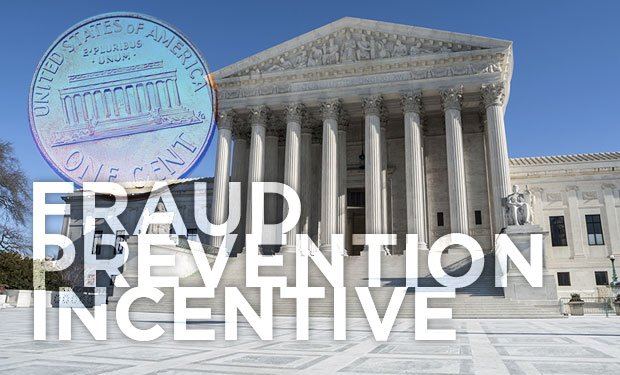Experts Debate Long-Term Impact of Supreme Court Decision

The long-running legal battle over the Federal Reserve's debit interchange fee structure has ended now that the U.S. Supreme Court has denied retailers' petition for another look at the legality of the fee structure introduced in 2011.
See Also: Securing Cloud Infrastructure: Learning from Mistakes
On Jan. 20, the Supreme Court declined to review a federal appellate court's March 2014 ruling, which supported the Fed's right to offer banking institutions a financial incentive to enhance debit fraud prevention investments, such as EMV (see Court Ruling: A Fraud Prevention Boost?).
While some experts predict the high court's decision is likely to spur more banking institutions to push forward with their issuance of EMV-compliant debit cards, others say the case will have little impact on banks' strategies.
How the Fee Structure Works
The Fed's debit fee structure, which took effect in October 2011, was implemented to help soften the blow banks and credit unions took after interchange income was decreased under the controversial Durbin amendment to the Dodd-Frank Wall Street Reform and Consumer Protection Act.
Under the 2010 Durbin amendment, the proposed interchange fee income cap was set at 12 cents per debit transaction for banking institutions with more than $10 billion in assets. Before that amendment, these institutions could charge merchants up to 44 cents for each debit transaction.
But the Fed's 2011 revamped fee structure capped the interchange fees banking institutions could charge merchants at 21 cents, and offered a five basis point adjustment to cover potential losses from fraudulent debit activity. Additionally, to offer institutions an extra incentive to invest in fraud prevention, the Fed included a 1-cent-per-transaction fee option, which could be added by banking institutions that prove they're using the additional income to fund fraud-prevention investments (see The Fed's Impact on Fraud Funding).
Catalyst for Change?
Fraud expert Avivah Litan, an analyst at the consultancy Gartner, says the end to the legal battle over the Fed's debit interchange fee structure will give banking institutions the revenue assurance they need to move forward with EMV.
"We will see more aggressive rollouts of EMV debit cards now by the issuers," Litan predicts. "Financial institutions will have more incentive to move forward with EMV debit now that they know where the fee structure stands. ... Without the fee structure in place, the financial institutions couldn't properly plan and budget for their EMV programs."
But Randy Vanderhoof, executive director of the EMV Migration Forum, says that despite the long-running legal battle over the Fed's fee structure, most of the U.S.'s largest institutions have already begun issuance of EMV debit cards to comply with the upcoming liability shift date.
After October, fraud that results from magnetic-stripe transactions will be the responsibility of the issuer or merchant that is not EMV-compliant (see EMV: U.S. Won't Make October Deadline).
"The thought of the Supreme Court taking up this [fee structure] issue was very remote," Vanderhoof says. "And small banks and credit unions are not covered under the Durbin interchange rules."
Long-Term Investments
Al Pascual, director of fraud and security at Javelin Strategy & Research, also contends that most large institutions, which have the most to gain from the Fed's interchange incentive for fraud prevention, have not been delaying their EMV debit rollouts because of the pending court case. But he points out that had the Fed's new fee structure not been upheld, future investments in more advanced EMV technology would be more difficult for banks and credit unions to afford.

